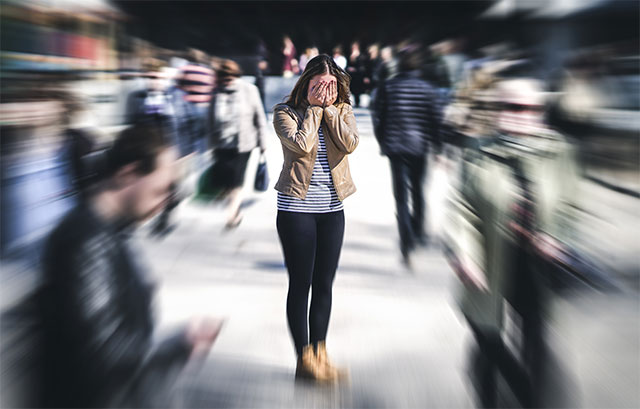
If there’s one thing the pandemic of Covid-19 has done, it has definitely created stress for nearly every person across this country and the world. There’s the stress of the unknown, the stress of losing a job, losing a loved one or not being able to get back to a “normal” life. Crisis hotlines have never been busier. It is clear to see that managing anxiety and overall mental health has never been more difficult.
Keep in mind, there is a difference between anxiety and anxiety disorders. Everybody has some level of anxiety, which is a normal reaction to stress and keeping us out of trouble. An anxiety disorder, however, is excessive fear and anxiety that can be exhibited in various ways. Only a medical professional can diagnose an anxiety disorder. These are some of the most common types of anxiety disorders and if they sound like something you are going through, speak to a medical professional as soon as possible.
1. Generalized Anxiety Disorder (GAD)
To excessively worry about a number of different things is called Generalized Anxiety Disorder or GAD. The worry can come from a number of things like money (or lack thereof), health, death, family, work or a variety of other issues. Typically, people cannot control how much they worry about something and it affects them daily for months on end. It often shows physical symptoms, including muscle aches, nausea and diarrhea.
GAD affects over 3% of the American population yearly, with women being twice as likely to be affected. The cause of GAD is unknown, but it seems certain factors play a part like biological factors, family history and life experiences.
2. Phobias
To have an extreme fear of something or a specific situation is referred to as a phobia. From a fear of heights, to snakes and even puppies, there’s nearly a phobia for everything you can think of. The fear of this object or situation is excessive and causes a person to do irrational things (like avoiding something in case the object of fear is nearby).
3. Panic Disorder
To have a panic attack or sudden feeling of terror with no real danger present can lead to panic disorder. There’s a feeling of losing control, which can also include the following:
- Rapid heartbeat
- Chest or stomach pain
- Difficulty breathing
- Weakness or dizziness
- Sweating
- Feeling hot or a cold chill
- Tingly or numb hands
The thing about panic disorder is that the attack can happen at any moment, for apparently no reason. This type of fear can take over your life and some people refuse to leave their homes.
4. Social Anxiety Disorder
Social Anxiety Disorder goes beyond social shyness. Many people feel nervous or anxious in a new situation, but when it becomes too much to handle it could lead to a serious diagnosis. Common situations that set off social anxiety disorder include: talking to strangers, public speaking, making eye contact, going on a date, using public restrooms, entering a room, eating in front of others and a whole host of other social situations.
If you have social anxiety disorder, it does not mean that all social situations cause an irrational level of anxiety. You might be able to make eye contact no problem, but you can’t speak in front of a group of people. When you are forced into these situation and feel the anxiety creep up, you might go through the following:
- Rapid heartbeat
- Muscle tension
- Dizziness and lightheadedness
- Upset stomach and diarrhea
- Inability to catch breath
- “Out-of-body” sensation
5. Post-Traumatic Stress Disorder
The inability to recover from trauma or a traumatic event is often labeled as post-traumatic stress disorder or PTSD. We often think of our soldiers coming back from war and experiencing PTSD from the trauma of war, but it can be caused by a variety of events.
The traumatic event will manifest in ways that you cannot overcome. You could have visual flashbacks that are scary, nightmares of the event and frightening or uncontrollable thoughts. People with PTSD begin to avoid anything that could be related to the event and it becomes destructive to everyday living.
6. Separation Anxiety Disorder
Becoming extremely worried about being away from a loved one can lead to separation anxiety disorder. While we see this in children, it goes far beyond kicking and screaming for adults. If you have separation anxiety disorder the thoughts of being separated from a loved one take over your every waking (and sleeping) thought and make daily functions difficult. The worry and panic turns into nightmares, headaches and even panic disorder.

Bottom Line
While we sift through these hard times, the development of serious mental health disorders is on the rise. It is important that you speak with your healthcare provider if you find yourself struggling with any of these disorders or if you worry that it could transform into one.
Comments are closed.
